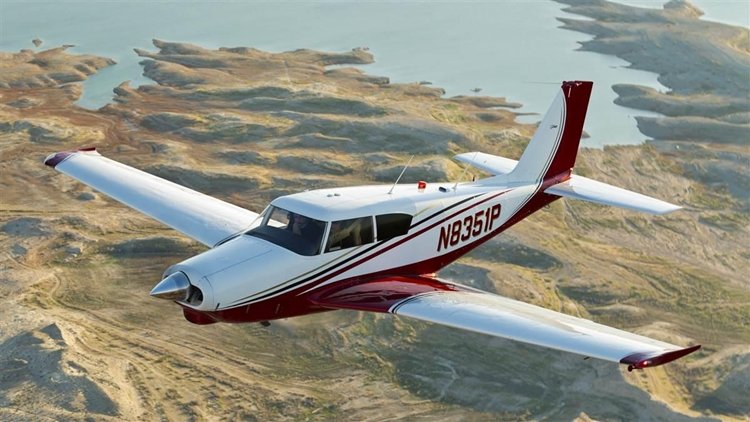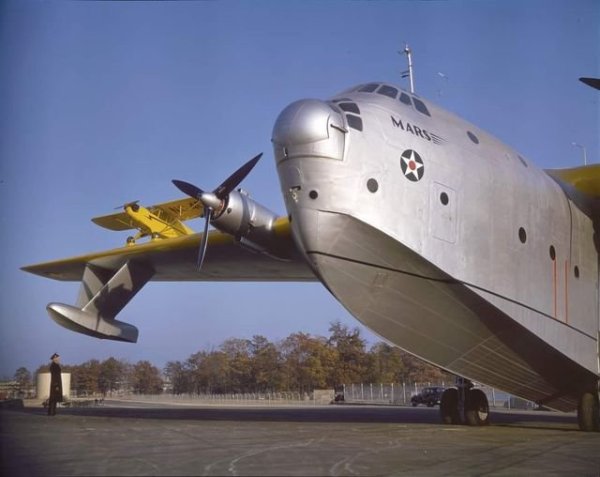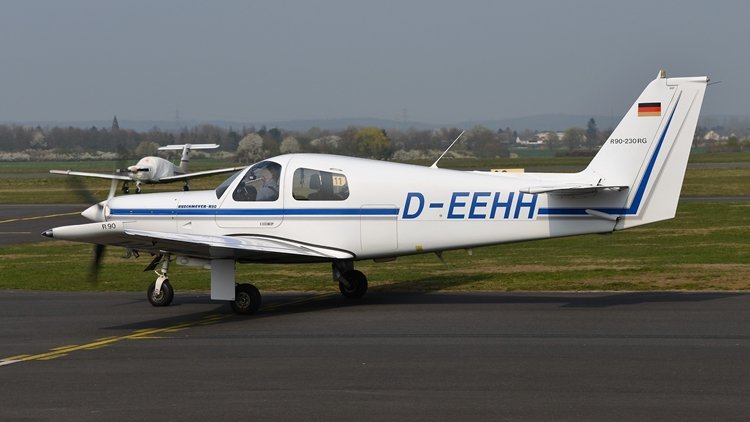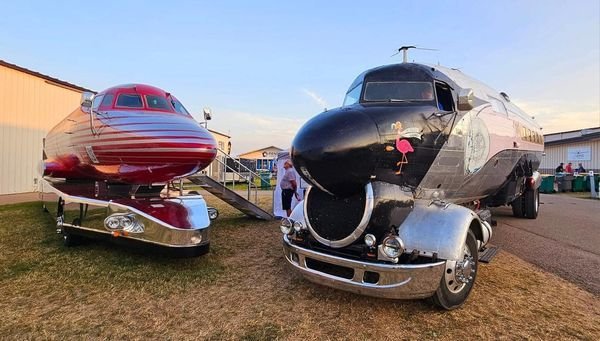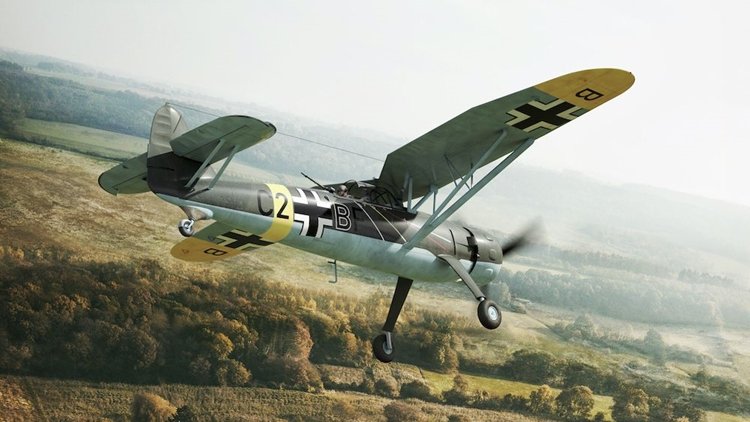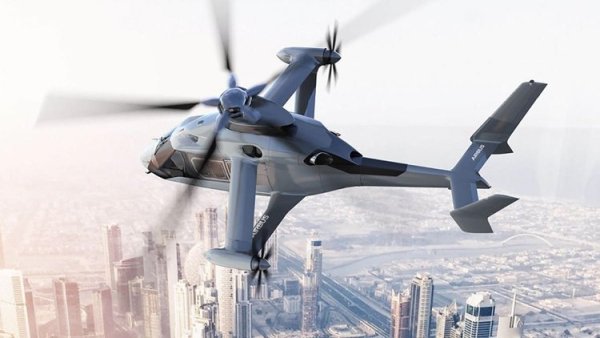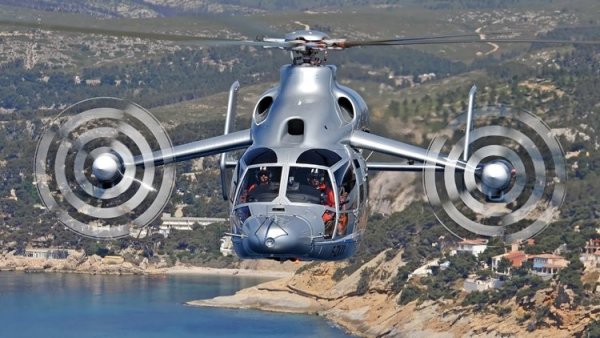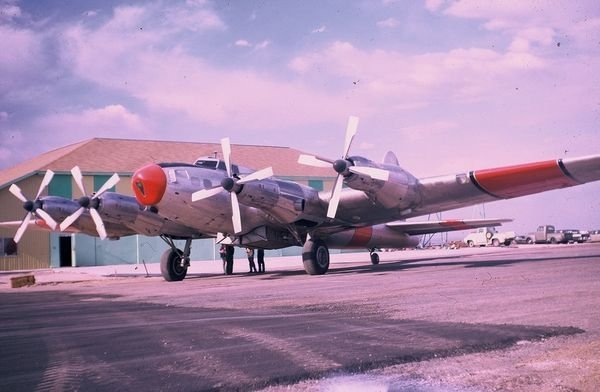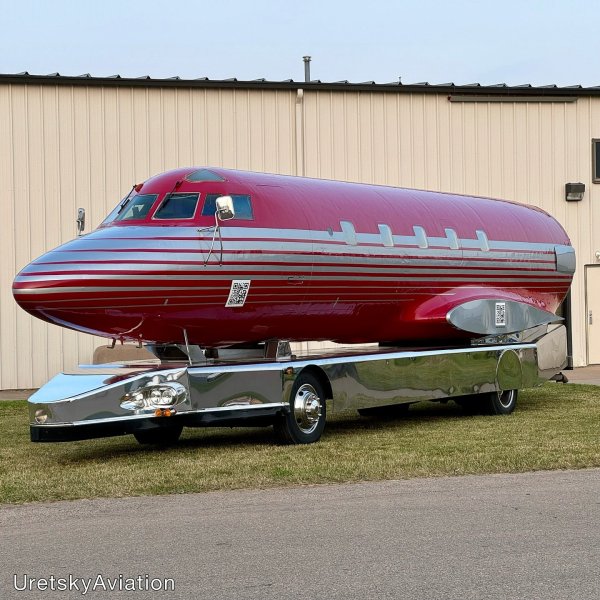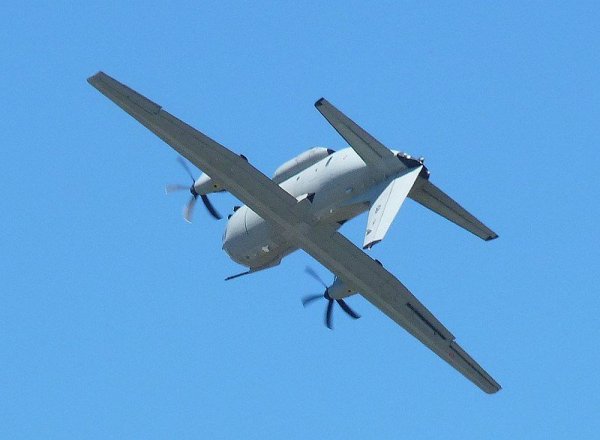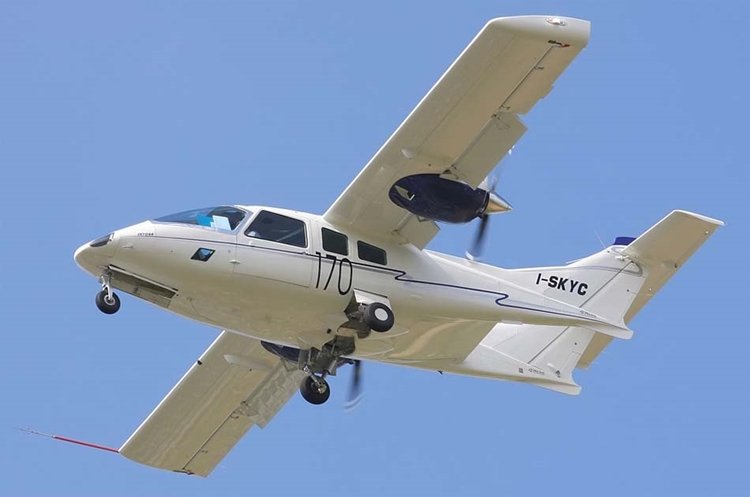-
Posts
7,563 -
Joined
-
Last visited
-
Days Won
67
Content Type
Profiles
Forums
Gallery
Downloads
Blogs
Events
Store
Aircraft
Resources
Tutorials
Articles
Classifieds
Movies
Books
Community Map
Quizzes
Videos Directory
Everything posted by red750
-
Dismiss it if you like, but it was covered on Ch 7News tonight with video from NASA.
-
I don't know how I missed this one earlier.
-
The Piper PA-24 Comanche is an American single-engine, low-wing, all-metal monoplane of semimonocoque construction with tricycle retractable landing gear and four or six seats. The Comanche was designed and built by Piper Aircraft and first flew on May 24, 1956. Together with the PA-30 and PA-39 Twin Comanches, it made up the core of Piper's lineup until 1972, when the production lines for both aircraft were destroyed in the 1972 Lock Haven flood. Two prototypes were built in 1956, with the first being completed by June 20, 1956. The first production aircraft, powered by a 180 hp (134 kW) Lycoming O-360-A1A engine, first flew on October 21, 1957. In 1958, it was joined by a higher-powered PA-24-250 with a 250 hp (186 kW) Lycoming O-540-A1A5 engine; this model was originally to be known as the PA-26, but Piper decided to keep the PA-24 designation. In 1964, the 400 hp (298 kW) PA-24-400 was introduced.[1] The following year, the PA-24-250 was superseded by the PA-24-260, featuring the Lycoming IO-540D or E engine of 260 hp (194 kW). A turbocharged version using a Rajay turbocharger was introduced in 1970. Production of the Comanche ended in 1972, when torrential rains from Hurricane Agnes caused the great Susquehanna River flood of 1972, flooding the manufacturing plant and destroying airframes, parts, and much of the tooling necessary for production. Rather than rebuild the tooling, Piper chose to abandon production of the Comanche and Twin Comanche and continue with two newer designs already in production at Piper's other plant in Vero Beach, Florida - the PA-28R-200 Arrow and the twin-engined PA-34 Seneca. Variants Comanche 180 1959 Piper PA-24 180 The original version of the Comanche was the PA-24, which featured a carbureted 180 hp (134 kW) Lycoming O-360-A1A engine, swept tail, laminar flow airfoil, and all-flying stabilator. The standard fuel capacity of the PA-24-180 was 60 US gallons (230 L). The flaps were manually actuated, controlled by the same Johnson bar actuator as the Piper Cherokee. The aircraft specifications were for cruise speeds of 116 to 139 knots (215 to 257 km/h) and fuel burns between 7.5 and 10.5 gallons per hour (28 and 40 L/h) at 55 and 75% power settings, respectively. Full-fuel payload with standard fuel was 715 lb (324 kg), with a gross weight of 2,550 lb (1,160 kg) and range with 45-minute reserve of 700 nmi (1,300 km; 810 mi). When new, standard, typically equipped Comanche 180s sold between $17,850 (1958) and $21,580 (1964). A total of 1,143 were built. Comanche 250 In 1958, Piper introduced a 250 hp (190 kW) version using a Lycoming O-540 engine, giving the PA-24-250 Comanche a top cruise speed of 160 kn (180 mph; 300 km/h). Most 250s had carbureted Lycoming O-540-AIA5 engines, but a small number were fitted out with fuel-injected versions of the same engine. Early Comanche 250s had manually operated flaps and carried 60 US gal (230 L) of fuel. Auxiliary fuel tanks (90 US gal (340 L) total) became available in 1961. Electrically actuated flaps were made standard with the 1962 model year. Comanche 260 PA-24-260 with LoPresti cowling on landing PA-24-260B with custom paint Four 260-horsepower (194 kW) versions of the Comanche were introduced beginning in 1965. They were: PA-24-260 (1965) PA-24-260B (1966 to 1968) PA-24-260C (1969 to 1972) (Specifications below) PA-24-260TC (Turbocharged 260C) (1970 to 1972) A total of 1,029 airplanes were sold from the Comanche 260 line, including the 260TC. The 260 had an empty weight around 1,700 lb (770 kg) and a maximum gross weight of 2,900 lb (1,300 kg). It had four seats, and a 90-US-gallon (340 L)-capacity auxiliary fuel system was available as an option. Cruise speed was advertised as 142–161 kn (263–298 km/h; 163–185 mph) with fuel burn of 10 to 14 gal/h (38 to 53 L/h). The 260B had an overall length 6 in (150 mm) more than the previous models due to a longer propeller spinner, not a longer fuselage. The 260B had a third side window and a provision for six seats. The fifth and sixth seats take up the entire baggage area and seat smaller adults, placarded to a total weight of 250 lb (110 kg). Typical empty weight was 1,728 lb (784 kg) and gross weight was 3,100 lb (1,400 kg). Fuel burn was 11 to 14 gal/h (42 to 53 L/h) and advertised speed was 140–160 kn (260–300 km/h; 160–180 mph). The 260C introduced a new "Tiger Shark" cowling, maximum gross weight of 3,200 lb (1,500 kg), cowl flaps, and an aileron-rudder interconnect. Cruise speed was advertised as 150–161 kn (278–298 km/h; 173–185 mph) with fuel flow of 12.5 to 14.1 gal/h (47 to 53 L/h). To prevent possible aft center-of-gravity problems due to the increased gross weight and its fifth and sixth seats, the propeller shaft was extended. This moved the center of gravity slightly forward. With a useful load of 1,427 lb (647 kg), it has the largest payload of all of the Comanches except the 400. Often mistaken on the ramp for the 400 model, the slightly longer cowling includes a distinctively longer nose gear door, as compared to the B models and older versions. Starting in 1970, Piper offered a turbo-normalized variant of the PA-24-260 known as the 260TC with a Lycoming IO-540-R1A5 engine and dual Rajay turbochargers. Twenty-six were produced between 1970 and 1972. Advertised by Piper as a "second throttle", the turbochargers are controlled using a manual wastegate assembly that places an additional handle labeled "boost" next to the throttle handle in the cockpit, effectively creating a secondary throttle. The TC model is certified for flight to 25,000 ft (7,600 m), with an advertised turbo critical altitude of 20,000 ft (6,100 m), giving a maximum true airspeed of 223 mph (194 kn; 359 km/h). PA-24-300 In 1967, one aircraft was modified with a 300 hp (224 kW) Lycoming engine for trials. It did not enter production. PA-24-380 Two prototype aircraft were built in 1961. They were standard Comanche airframes, but had 380 hp (283 kW) Lycoming IO-720-A1A engines with a three-bladed propeller. The design was modified with an even larger 400 hp (298 kW) engine and produced as the PA-24-400. Comanche 400 The PA-24-400 Comanche 400 was produced from 1964 to 1966. Only 148 PA-24-400s were built. The Comanche 400 is powered by the 400 hp (298 kW), horizontally opposed, eight-cylinder Lycoming IO-720 engine, developed specifically for the model. Cooling problems have happened with the rear cylinders. Comanche 400, MSN 26-52, exhibited at the 1966 Hannover Air Show, Germany The Comanche 400 has a three-bladed propeller and carries 100 US gal (380 L) of fuel, or 130 US gal (490 L) with optional extended tanks. Fuel burn was advertised as 16 to 23 gal/h (61 to 87 L/h), at 55-75% power. The high fuel burn means that it is expensive to operate. The 400 had a typical empty weight of 2,110 lb (960 kg) and a maximum gross weight of 3,600 lb (1,600 kg). Book speeds for the PA-24-400 included a cruising speed of 185 kn (343 km/h; 213 mph) and a top speed of 194 kn (359 km/h; 223 mph). While identical in planform to other PA-24 models, the 400 is structurally strengthened, primarily in the tail, with an extra nose rib in the stabilator and the vertical fin. The stabilator, vertical fin, and rudder of the 400 share virtually no common parts with the 180, 250, or 260 hp (190 kW) Comanches.
-
Astronauts trapped in space by Boeing's faulty Starliner are given horrifying news about potential return to Earth. The US space agency revealed a contingency plan that would launch a two-person crew on SpaceX's Crew-9 mission in September, but still wouldn't bring the crew home until months later. Suni Williams and Butch Wilmore, who have already been trapped on the International Space Station (ISS) for more than two months, may not come back to Earth until February 2025. Source for Nev: Read report.
-
The unit going on display in Melbourne this weekend is an Xpeng eVTOL, built by the Chinese Xpeng car company who will start marketing their EV cars in Australia shortly. The reports are on Herald-Sun/Mercury websites behind paywalls. The report on 7News said the introduction of the eVTOLs could be by the end of the decade. Like cars, their range is limited with an endurance of 30 minutes. Price estimated up to $300,000. However, there was a report that flying taxis would be operating from the city to the airport in 2020, and we know how that worked out. Xpeng EV, one of a number of models.
-

sabre aircraft in the garden - on a post
red750 replied to johnm's topic in Aircraft General Discussion
Kappa 77 KP 2U-SOVA (now Jihlavan Skyleader). See aircraft profile here. -
The Ruschmeyer R 90 is a four-seat light aircraft designed and produced in Germany in the late 1980s and early 1990s. MF-85 Ruschmeyer Luftfahrttechnik initially designed the Ruschmeyer MF-85, intended to be powered by Porsche PFM 3200 derivatives, which was debuted at the 1987 Hannover Air Show. The MF-85 was a composite four seat aircraft, planned to be offered with 134 to 183 kW (180 to 245 hp) engines, priced at DM245,000 to DM325,000 (excluding avionics), with optional fixed or retractable undercarriage. The prototype (V001 D-EEHE) first flew with a 212 hp (158 kW) Porsche PFM 3200N, driving a 3-bladed Mühlbauer MTV.9 constant speed propeller, on 8 August 1988, piloted by Horst Ruschmeyer. The second and third aircraft, V002 (D-EERO) and V003 (D-EERH), on flew on 23 September 1990 and 12 February 1992 respectively. Despite promising flight test results, the unavailability of Porsche engines led to the development of the Textron Lycoming powered R 90. R 90 Powered by a Lycoming IO-540-C4D5 driving a Mühlbauer MTV.14-B constant speed propeller, the production R 90-230RG was built from 1988 to the mid-1990s in Germany. The engine is de-rated to 172 kW (231 hp) to reduce noise, but still enables the R 90 to reach a maximum cruising speed of 324 km/h (175 kn; 201 mph). German certification was awarded in June 1992, with 28 production aircraft built when Ruschmeyer Luftfahrttechnik filed for bankruptcy in June 1996. In 1999, the assets of Ruschmeyer were purchased by Solaris Aviation of West Palm Beach, Florida, marketing the R90 as the Solaris Sigma. In 2004, the project passed to Aircraft Technology Consulting, which restarted production in Germany, building two more aircraft by mid 2005. Variants MF-85 The first three prototypes powered by Porsche PFM 3200 engines. R 90 Production aircraft powered by Lycoming IO-540-C4D5 engines R 90-230-RG: The main variant with retractable undercarriage (Specifications below) R 90-230-FG: Variant with fixed undercarriage, powered by Lycoming O-540-J engines. R 90-180-FG: Variant with fixed undercarriage, powered by Lycoming IO-360 engines. R 90-350T-RG: High performance variant with retractable undercarriage, powered by 185 kW (248 hp) turbo-charged engines. R 90-420AT-RG:High performance variant with retractable undercarriage, powered by Allison 250-B17 turboprop engines R 95 5/6 seat variant with retractable undercarriage. Solaris Sigma Production and marketing in the United States
-
The DuPont Aerospace DP-1 was a subscale prototype for a fixed-wing VSTOL transport aircraft, intended to take off and land like a helicopter and fly like an airplane. The fullscale aircraft, named DP-2, was designed to travel at high subsonic speeds with a greater range than its rotary-wing equivalent, and to allow troops to rappel from the aft cargo ramp. The development of the 53% scale DP-1 aircraft was originally funded in the early 1990s as a backup to the V-22 Osprey program, which was undergoing significant technical and political challenges. During the construction of the test aircraft, program management changed the requirements, and mandated that the vehicle be tested as a UAV. This change added significant cost and time to the project, but in September 2007, the DP-1 autonomous prototype achieved sustained, controlled tethered hovers of 45 seconds at the Gillespie Field test site. On June 13, 2007, the U.S. House Committee on Science and Technology held a hearing about the fate of the DP-2. In August 2007, funding was finally cut, after a total of $63 million spent over nearly two decades.
-

And now for something a little different at TIAT
red750 replied to tillmanr's topic in Aviation Videos
It's a video clip that popped up on FB. Maybe not everyone has seen it. I thought it was interesting that he bounced it on the road, intentionally he said, before landing. What's your beef? -

And now for something a little different at TIAT
red750 replied to tillmanr's topic in Aviation Videos
119K views · 431 reactions | Almost Made It To The Runway! #airplane... WWW.FACEBOOK.COM Almost Made It To The Runway! #airplane #pilotlife #landing #M #studentpilot #pilotdebrief #flying. -
-
The Henschel Hs 126 was a German two-seat reconnaissance and observation aircraft of World War II that was derived from the Henschel Hs 122. The pilot was seated in a protected cockpit under the parasol wing and the gunner in an open rear cockpit. The prototype aircraft frame was that of a Hs 122A fitted with a Junkers engine. The Hs 126 was well received for its good short takeoff and low-speed characteristics which were needed at the time. It was put into service for a few years, but was soon superseded by the general-purpose, STOL Fieseler Fi 156 Storch and the medium-range Focke-Wulf Fw 189 "flying eye". The first prototype was not entirely up to Luftwaffe standards; it was followed by two more development planes equipped with different engines. Following the third prototype, ten pre-production planes were built in 1937. The Hs 126 entered service in 1938 after operational evaluation with the Legion Condor contingent to the Spanish Civil War. By the time the Hs 126 A-1 joined the Luftwaffe, the re-equipping of reconnaissance formations was already well advanced. By the start of World War II in September 1939, the Hs 126 served with Aufkl.Gr 10, 11, 12, 13, 14, 21, 23, 31, 32 und 41. They were used with great success in the attack on Poland where it proved itself as a reliable observation and liaison aircraft. Its use continued after the end of the Phony War in May 1940. It suffered some losses when intercepted by Allied fighter aircraft: 20 Hs 126s were lost between 10 and 21 May 1940. Its successor, the Focke-Wulf Fw 189 entered service in 1940 but the Hs 126 remained the main short range reconnaissance aircraft until 1942. 47 squadrons equipped with Hs 126s participated in the invasion of the Soviet Union in 1941. The Hs 126 was also used in North Africa, such as with the 2./Aufklärungsgruppe (H)/14 which used the type until the end of 1942. Late in the war, it was used in glider tug and night ground attack roles, but production of the Hs 126 ended in January 1941 and the type was retired from the front line in 1943.
-
The Airbus RACER (Rapid and Cost-Effective Rotorcraft) is an experimental high-speed compound helicopter developed by Airbus Helicopters from the Eurocopter X³. Revealed at the June 2017 Paris air show, final assembly will start in mid-2020 for a 2021 first flight. Cruising up to 400 km/h (216 kn), it aims for a 25% cost reduction per distance over a conventional helicopter. On 20 June 2017 at the Paris air show, Airbus Helicopters revealed a high-speed demonstrator configuration based on the X3 developed within the Clean Sky 2 research programme. Its aerodynamic configuration was validated in 2017. In February 2018, the 2,500 hp (1,900 kW) Safran Aneto-1X power plant was selected over the RTM322 initially selected, it is 25% more compact for the same power. By October 2018, design of key subsystems was completed before the first components started manufacturing with long-lead items, as the lateral drive shaft production began. GE's Avio Aero in Italy launched procurement and manufacturing of the lateral gear boxes housings, GE Aviation Systems in UK is building the wing’s titanium cradle, INCAS/Romaero in Romania started the design and manufacturing the hybrid structure (metal & composite) of the Main Fuselage and the Firewalls and Aernnova in Spain the tail parts primary structure. It made its first flight on 25 April 2024 in Marignane. By its third test flight in May, it had performed aggressive manoeuvres and reached 165 kn (305 km/h), using 300 kW (400 hp) less power than a conventional helicopter, while both engines were at 50% torque at 160 kn (300 km/h). It should reach 220 kn (410 km/h) later in 2024 and the “eco-mode” with one engine shut down in cruise should be flight tested in 2025, along mission demonstrations.
-
The Grumman XP-50 was a land-based development of the shipboard XF5F-1 Skyrocket fighter, entered into a United States Army Air Corps (USAAC) contest for a twin-engine heavy interceptor aircraft. The USAAC placed an order for a prototype on 25 November 1939, designating it XP-50, but it lost the competition to the Lockheed XP-49.
-
The Horton Wingless aircraft was invented by William Horton of Huntington Beach, California in 1952. He called the strange-looking plane “wingless” because he claimed the entire craft was a simple air foil with vertical fins and utilized all surfaces for lift. Unfortunately, Horton did not have the money to develop it, but was able to get into a partnership with billionaire Howard Hughes and Harlow Curtis. The plane had a successful, but short, test flight. The venture failed not because the airplane didn't fly, but because Hughes wanted to take full credit for the patents and production rights, which Horton refused to allow. Hughes sued Horton which effectively stopped any further development of the aircraft. Hughes managed to have the prototype and partially-constructed production version destroyed. One aspect of the law suit was a statement that the aircraft could not fly, which witnesses, photographs and video obviously show not to be true. At one point, Horton served jail time for selling stock in a company for an airplane that "couldn't fly" and had several violent confrontations with people associated with Hughes and Curtis because of the law suit and resulting injunctions."
-
The Yokosuka R2Y Keiun (景雲 - "Cirrus Cloud") was a prototype reconnaissance aircraft built in Japan late in World War II. Commissioned for the Imperial Japanese Navy after the R1Y design was cancelled due to its disappointing performance estimates, the R2Y used coupled engines driving a single propeller and also featured a tricycle undercarriage. Completed in April 1945, the prototype made a short flight on 8 May, but was destroyed in a US air raid only a few days later, thus ending development.
-
-
-

And now for something a little different at TIAT
red750 replied to tillmanr's topic in Aviation Videos
-
The OMA SUD Skycar is an Italian twin-engined five-seat piston-engined pusher configuration monoplane designed and built by OMA SUD SpA based in Capua. The Skycar is an unusual twin-engined pusher-configuration high-wing monoplane with twin vertical tails with a high-mounted single horizontal stabiliser. The Lycoming IO-360-C1E6 piston engines are mounted on the trailing edge of each mainplane. The prototype first flew on 21 December 2007 and was first displayed in public at the 2009 Paris Air Show. The Skycar was issued with a European Aviation Safety Agency Type Certificate on 8 January 2010. The Skycar was designed for both the General Aviation market and military market. The Skycar was issued FAA Type Certificate A63CE on 14 March 2011.
-
The Performance Turbine Legend is an American sports monoplane designed by Performance Aircraft for sale as a kit for amateur construction. The Legend is a streamlined low-wing monoplane mainly constructed of carbon-fiber-reinforced polymer. It has swept-back tail surfaces with a mid-mounted tailplane and tapered wings, with optional winglets. The prototype was powered by a 575 hp (429 kW) Chevrolet V-8 engine with a three-bladed tractor propeller and a ventral air-scoop, the Turbine Legend has a 724 shp (540 kW) Walter M601 turboprop with a three-bladed tractor propeller. The Legend has a retractable tricycle landing gear; the mainwheels retract inwards and the nosewheel rearwards. The enclosed cockpit has room for two persons in tandem seats with dual controls and has a rear-hinged, upward-opening, canopy with a fixed windscreen. The Legend was first flown in 1996 by Performance Aircraft and the prototype was converted into a Turbine Legend in 1999. The assets of Performance Aircraft were taken over by Lanny Rundell to be marketed by Legend Aircraft of Winnsboro, Louisiana. In a March 2020 review for Kitplanes, writer Doug Rozendaal described the takeoff: "the acceleration is like a jet fighter." He also praised the handling and the fit and finish of the design. Variants Legend Piston-engined variant, powered by a 575 shp (429 kW) Chevrolet V-8 automotive conversion piston engine. Turbine Legend (Specifications below) Turboprop-engined variant, powered by a 724 shp (540 kW) Walter M601 turboprop engine. JC 100 A Turbine Legend built by Toys 4 Boys in 2000, designated the JC 100 Turbine Legend (Garrett Edition) A Turbine Legend was built by Innovative Wings Inc. utilizing a 1,100 hp (820 kW) Garrett TPE331-10 engine. Turbine Legend Venom A military version marketed by Venom Military Aircraft and intended for the training and light attack roles. It has a 750 shp (559 kW) GE H75 engine, major changes to the wing design, a carbon fiber composite structure, fuel capacity increased to 145 U.S. gallons (550 L; 121 imp gal), full digital panel, electric remote canopy, aft spar flaps system and electric Fowler flaps.[5] No sales have yet been announced.
-


